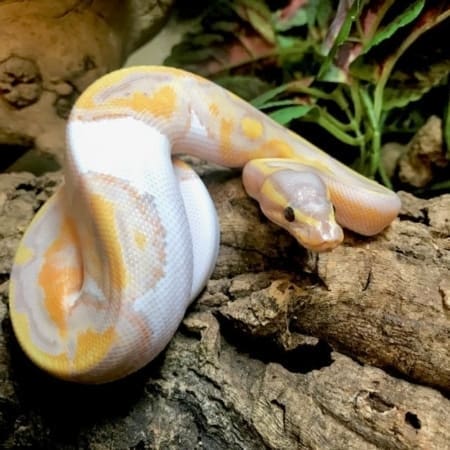
Hidden much more than other ball pythons, which have an easier time blending inĬhallenging for them, and they are at greater risk, they are fully capable of The piebald ball pythons spend most of their time in burrows underground, like “normal” ball pythons, coming out in the evenings.Īll ball pythons are most active at dawn and dusk and can even be more nocturnal, choosing to hunt at this time as the weather is a bit cooler.Īt hiding, and because they are a more obvious target, pieds tend to stay Pythons, which have what is considered a normal coloration in grasslands and They are very distinctive and don’t exactly blend in with their surroundings, but they survive in the wild, despite being a prime target for predators looking for their next meal. Can PiedĪ sure way to draw attention to themselves in the wild, right? Incorporated to make many variations because they have been around for so long. Recorded as early as 1966, but the proper documentation for the morph has only Some examples of this are the Mojave pied sulfur or the ghi pastel pied.ĭon’t make the mistake of thinking they are a different or separate morph, as this is just another name for a piebald. It comes to ball pythons, and you will find that as you are looking atĭifferent options, some are referred to as a pied. If the parents of the piebald ball python show as piebald too, you can’t count on the offspring showing the same patterns or unpigmented areas.Ĭreatures referred to as pied ball pythons. Trait is very unpredictable in its display on animals.
PIEBALD BALL PYTHON SKIN
When humans have piebaldism, you might notice patches of skin or hair without any pigment, but this lack of melanocytes is in their scales in snakes. You will find it contributes to giving you the color of your eyes and even your hair and skin colors. Pythons but can occur in humans and other animals throughout the world.Ĭertain areas of the body lack a cell called melanocytes.

Picture it like someone has taken an eraser to parts of the snake’s body and erased portions of the normal colorations you would see. Most of the time, the snake’s head is entirely untouched by the white, leaving it to show the underlying pattern of your ball python.

The pattern is often described as cloud-like, and sometimes the all-white patches can cover nearly all of the ball python’s body. The piebald ball pythons are distinguished from other species members because of their very interesting unpigmented (white) color, variable patterns, and random splotches of color throughout the body. What exactly makes a ball python piebald? Python comes is interesting, but what makes a piebald ball python special, and There’s absolutely no way to predict if you will produce a piebald ball python or not, and if you do, you can’t know if the white will cover 10%, 50%, or 90% of the body. Produce offspring, and each egg has a 25% chance of showing the piebald traitĪs breeders create more designer-type morphs, the genetics get a bit more complicated because you add genes from so many different base morphs. To explain further, say you have a male and female ball python you know have the piebald gene, even if they don’t look like it. When the male and female ball pythons with the piebald gene are mated, they do not have to appear piebald for their offspring to show the interesting morph. Parents must carry this piebald gene, or else there is no chance the offspring They are stronger than the recessive ones with a dominant gene, and when paired with a recessive gene, the dominant one will always win out.

You must have two recessive genes for a recessive trait to manifest in the offspring instead of dominant genes. Piebald is a recessive trait two ball pythons can carry without looking like a piebald. The ball python is the piebald ball python.īreeders and herpetologists create them by matching two ball pythons that carry the recessive piebald gene. These snakes are some of the most popular pet snakes in the United States, largely due to their easygoing attitude and docile nature.


 0 kommentar(er)
0 kommentar(er)
